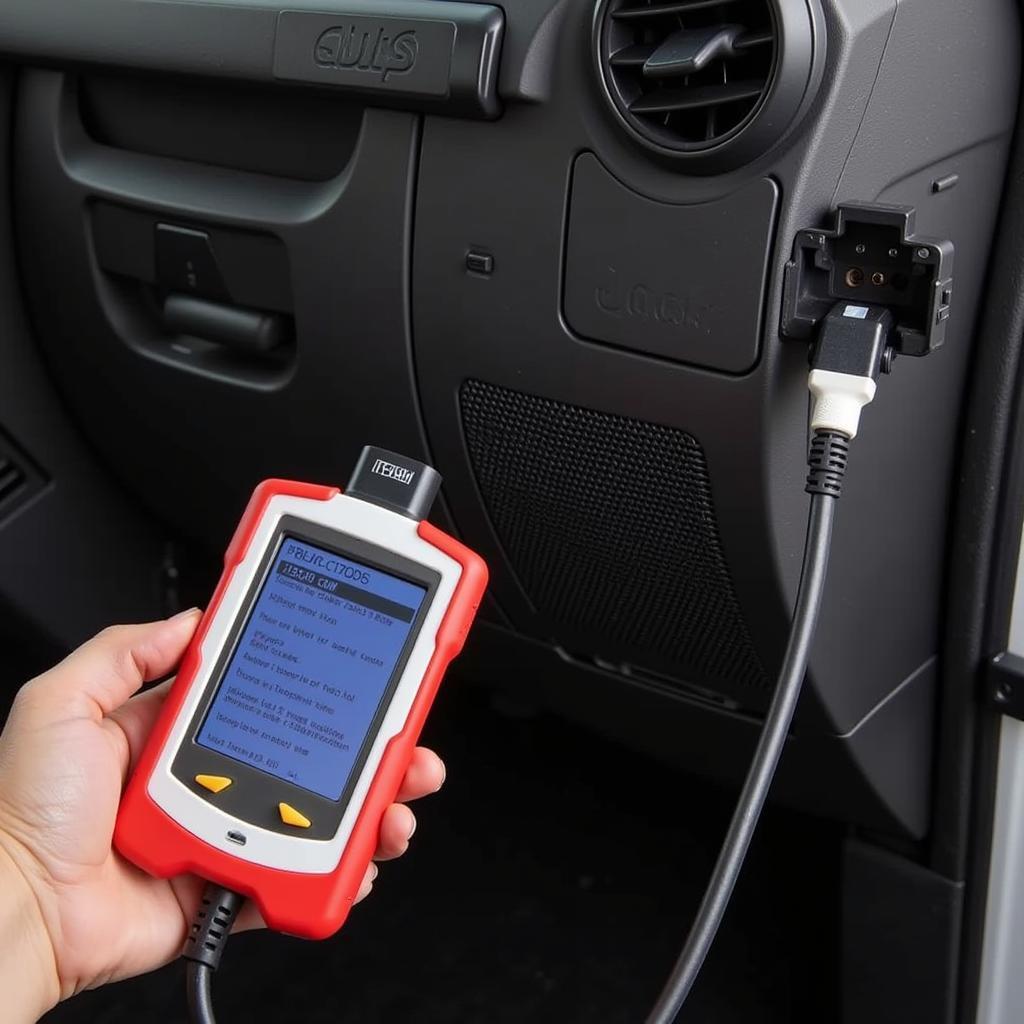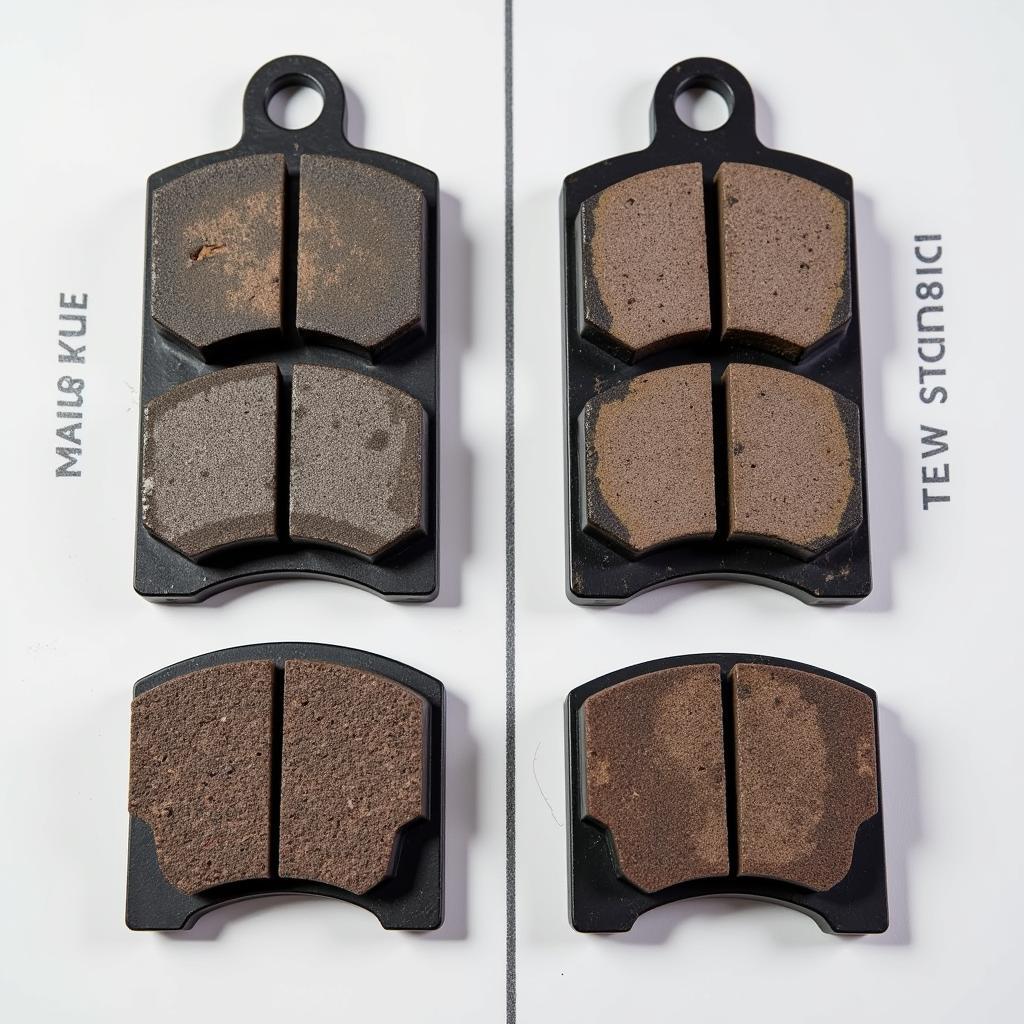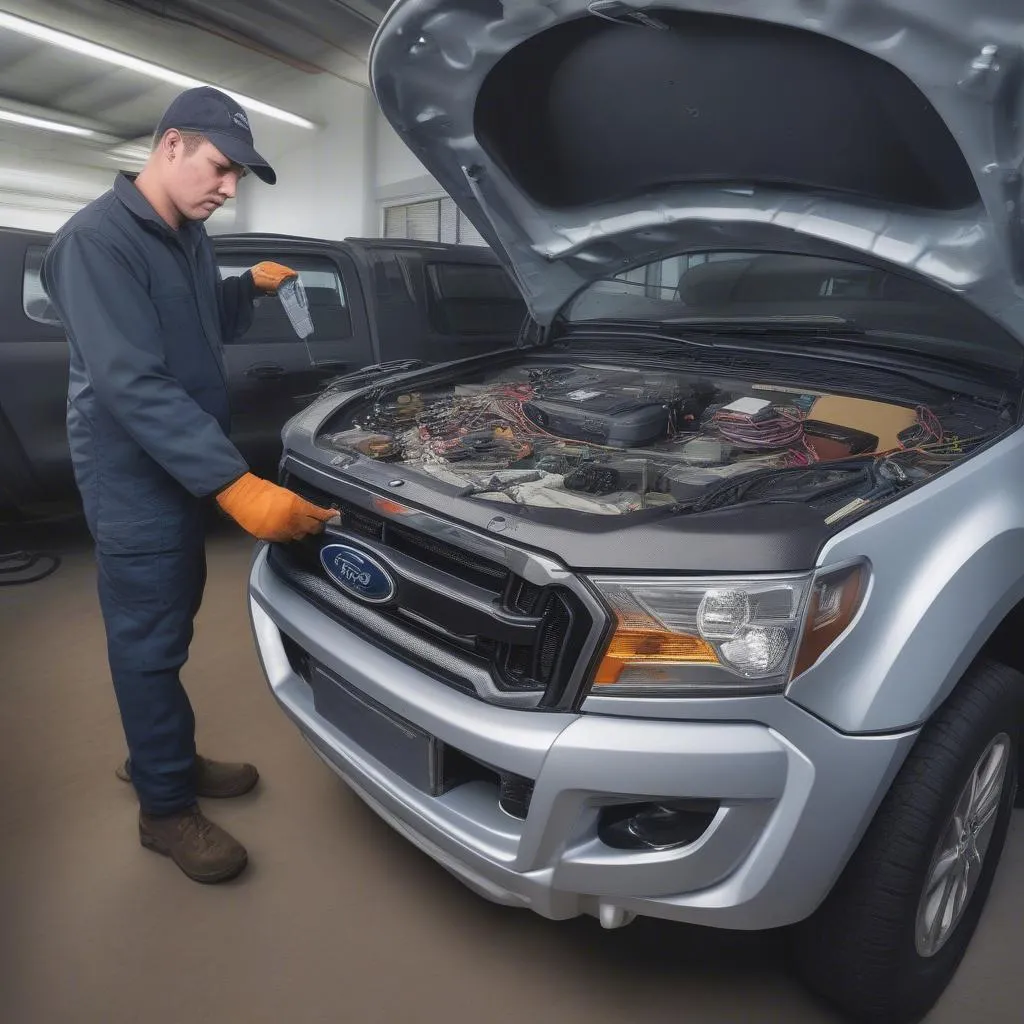The brake warning light on your 2007 Jeep Wrangler is a crucial safety feature that should never be ignored. When illuminated, it signals a potential issue with your braking system that requires immediate attention. Whether it’s a persistent glow or an intermittent flicker, understanding the common causes and solutions can help you diagnose the problem and get back on the road safely.
Common Causes of a 2007 Jeep Wrangler Brake Warning Light
Several factors can trigger the brake warning light in your Jeep Wrangler. Here are some of the most common culprits:
-
Low Brake Fluid: One of the most frequent reasons for the warning light is low brake fluid. Your braking system relies on hydraulic pressure to function correctly, and a leak in the system can lead to a drop in fluid level, triggering the warning light.
-
Worn Brake Pads: Brake pads naturally wear down over time. When they reach a certain thickness, the brake pad wear sensor will contact the rotor, completing a circuit and illuminating the warning light. This serves as a reminder that it’s time for a brake pad replacement.
-
Faulty Brake Light Switch: The brake light switch, located behind the brake pedal, is responsible for activating your brake lights when you press the pedal. If this switch malfunctions, it can also cause the brake warning light to illuminate.
-
ABS Issue: Your Jeep Wrangler is equipped with an Anti-lock Braking System (ABS). If the ABS control module detects a problem within the system, such as a faulty wheel speed sensor, it can trigger the brake warning light.
-
Parking Brake Engaged: It may seem obvious, but sometimes the simplest explanation is the right one. If your parking brake is even slightly engaged, it can illuminate the warning light.
Diagnosing the Problem
Determining the exact cause of the brake warning light requires a bit of investigation. Here’s a step-by-step guide:
-
Check the Parking Brake: Begin with the simplest solution. Ensure your parking brake is fully disengaged. If the light remains on, proceed to the next step.
-
Inspect Brake Fluid Level: Locate the brake fluid reservoir under the hood. The reservoir will have “DOT 3” or “DOT 4” printed on the cap, indicating the type of brake fluid used. Check the fluid level. If it’s below the “Min” line, add the appropriate brake fluid until it reaches the “Max” line.
-
Inspect Brake Pads: Visually inspect the brake pads through the spaces between the wheel spokes. If the pads are worn thin (less than 1/4 inch of friction material remaining), they will need to be replaced.
-
Scan for Trouble Codes: While not essential, using an OBD-II scanner can provide valuable insight into the issue. Connect the scanner to your Jeep’s diagnostic port (located under the dashboard on the driver’s side) and check for any stored trouble codes related to the braking system. These codes can pinpoint the source of the problem.
 OBD-II Scanner Connected to a Jeep Wrangler
OBD-II Scanner Connected to a Jeep Wrangler
Solutions and Repairs
Once you’ve identified the likely culprit behind your brake warning light, it’s time to address the issue. Here are some potential solutions:
-
Adding Brake Fluid: If low brake fluid is the cause, simply adding fluid might temporarily resolve the issue. However, it’s crucial to investigate and repair any leaks in the system to prevent recurring problems.
-
Brake Pad Replacement: Worn brake pads require immediate replacement to ensure safe and effective braking. This job is best left to a professional mechanic, especially if you’re not comfortable working on your vehicle’s braking system.
-
Brake Light Switch Replacement: A faulty brake light switch needs to be replaced. It’s a relatively inexpensive part and a straightforward repair for most DIY enthusiasts.
-
Addressing ABS Issues: Troubleshooting ABS problems can be more complex and often requires specialized knowledge and tools. It’s advisable to consult a qualified mechanic or an automotive electrician for diagnosis and repair.
“Remember,” advises master mechanic John Davis, “even minor brake issues can quickly escalate into major safety hazards. It’s always best to err on the side of caution and have your Jeep Wrangler’s braking system inspected by a professional if you’re unsure about the cause of the warning light.”
Preventing Future Problems
Preventing brake problems is always preferable to dealing with them after they arise. Here are some tips to keep your Jeep Wrangler’s brakes in optimal condition:
-
Regular Brake Inspections: Have your brakes inspected by a qualified mechanic at least once a year or every 12,000 miles, whichever comes first.
-
Brake Fluid Flush: Brake fluid can absorb moisture over time, reducing its effectiveness. Have your brake fluid flushed and replaced every 24,000 miles or as recommended in your owner’s manual.
-
Quality Brake Pads: When it’s time for brake pad replacement, opt for high-quality pads from reputable brands. These pads generally offer better performance, longevity, and noise reduction.
-
Avoid Riding the Brakes: Constantly riding your brakes, especially on downhill slopes, can generate excessive heat and accelerate brake wear.
 New vs. Worn Brake Pads
New vs. Worn Brake Pads
Conclusion
A glowing brake warning light in your 2007 Jeep Wrangler should never be ignored. By understanding the common causes and solutions, you can address the issue promptly and ensure your safety on the road. Remember, regular maintenance and timely repairs are crucial for maintaining a reliable and safe braking system.


